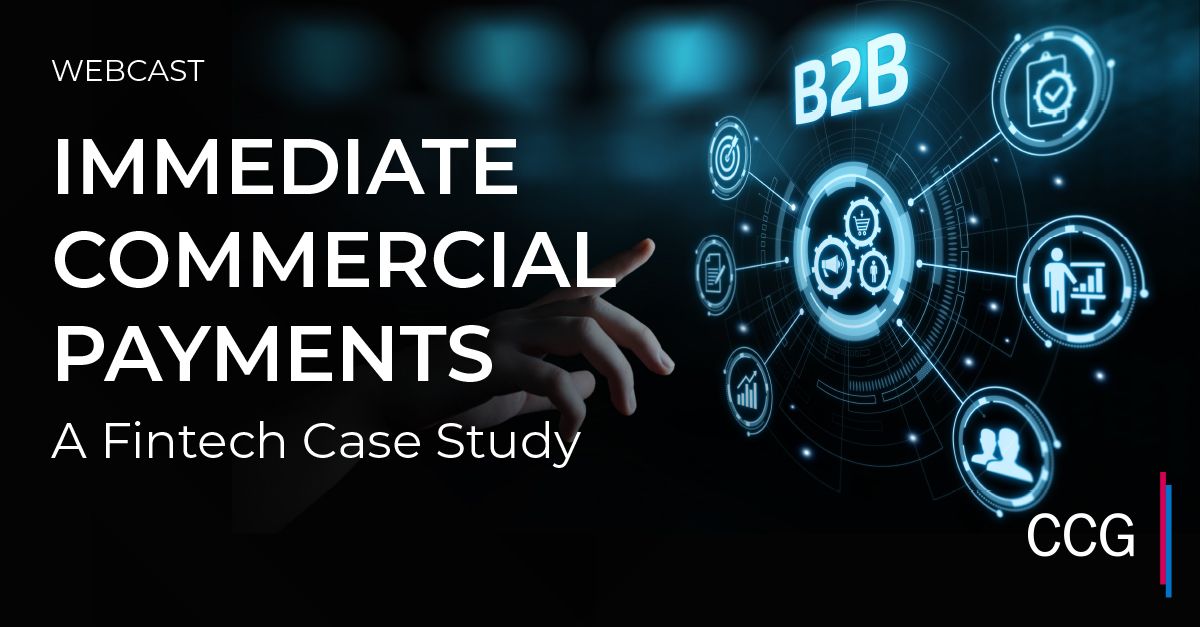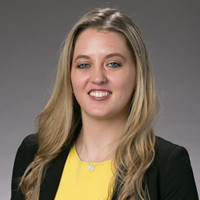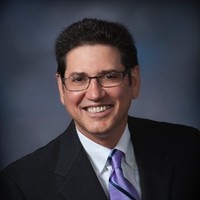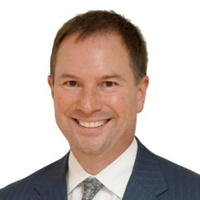Fintech Case Study: Immediate Commercial Payments
Available On Demand – 33 minutes
Hearing a lot about bank/fintech partnerships but not sure where to start? Join the CCG team for a panel conversation with host Scarlett Sieber and industry veteran Joe Spatarella joined by special guest David Jackson, Managing Director of Marketcy, as they walk through a case study exploring how a top 50 bank partnered with a fintech (over a traditional vendor) to provide an innovative B2B immediate payments solution.
Executives will hear first hand the bank’s requirements and decision process,how the relationship and the project were organized, and what results were achieved. The session is not to be missed.
Subscribe to CCG Insights.
[restrict]
Scarlett Sieber: Welcome back, everyone, to CCG’s Webcast, we are so happy to have you with us. This is our sixth episode in our commercial digital banking series. We have explored a lot of different aspects and this week is no different. We’re going to be looking at payments on the commercial side this week and specifically a fintech case study, really the immediate and commercial payments opportunities. We have a another special guest. As always, on this commercial series. I will be joined by my incredible colleague, Joe Spatarella, who is Managing Director here at CCG Catalyst. I am your host, Scarlett Sieber, Managing Director, Chief Strategy & Innovation Officer here at CCG. We have a third special guest this week for our fireside chat. I would love to introduce you to David Jackson, who is a payments and SMB expert. You can find his entire background below. We’ll go right into the quick housekeeping. You see a variety of buttons at the bottom of your screen. If you look right in the center, the first one, you will see a picture of Joe and I’s face. Go ahead and click on that. You will get a link and a list of all of our bios and backgrounds, David Jackson’s background is there as well. You can see what we’ve been up to, where we come from, and then you can connect with Joe and I on LinkedIn. And of course, email us any questions you have directly to our email there. To the right you have the CCG logo, that is your go to resource for all things you would potentially want to know. There is a ton of thought leadership stuff that Joe, myself and other colleagues have written. There’s some other great resources you might want to get your hands on, some case studies and other things. And of course, you can always go to CCG’s website to find all that information. To the left of that picture of Joe and I, you have that Q&A button. Please use that throughout the entire conversation. We will be responding to as much as we can live, and if not, I will be getting the guys to respond via chat. Worst case, if we miss you, we will respond to you by the end of the day and get to you after the webcast. So without further ado, I think we are about ready to go. David, thank you so much for joining us. We’re very happy to have you. Can you just say hi to the guests and the audience really quickly?
David Jackson: Hello. It’s a pleasure to be here. Thank you very much.
Scarlett Sieber: Perfect. And Joe as well, can you just give a quick hello?
Joe Spatarella: Sure. Good to be here. And I also want to extend my welcome to David Jackson, who I’ve known for close to 20 years, and we’ve worked together in different capacities, always finding interesting ways to integrate payments into online banking.
Scarlett Sieber: Awesome. Joe, before we get going here, because there’s a lot we want to cover, can you, as you do so elegantly, give us a bit of a context of what the purpose of this session is and kind of what angle we’re going to be taking?
Joe Spatarella: Of course. So the context here is that, as you mentioned, this is a case study of a top 50 U.S. based bank that leveraged a fintech to provide a very innovative B2B immediate payment solution and David will certainly talk a lot more about that. So our goals are really, first of all, to understand the banks requirements and decision process to leverage the fintech solution. Secondly, how the relationship and the project was organized. And third, what results were achieved. So with that, Scarlet, I’ll let you start the conversation.
Scarlett Sieber: Perfect. Joe when you and I were talking about this concept, my eyes lit up because being a bank executive and always the one that was the fintech advocate, this topic is so close to me and I care so much about it. I hear the hesitancy, the fear, and then the desire of the bank and credit union executives on the idea of going in and actually partnering with fintech. To hear an example of a top 50 bank is super exciting, especially on the commercial side, I don’t think we see as much light being shed on that side as we do on the consumer, and it’s really hard to get right. So I cannot wait for us to do that. So, David, I want to ask you a bit of a high level, philosophical question to get us started. On this concept of bank fintech partnership, it has been around for a long time. And of course, it’s there’s been many evolutions of it. What is your perspective and do you actually believe they can be successful?
David Jackson: I completely believe they can be successful, but it takes a little bit of work. So most of the time, banks are written about in a negative way when it comes to innovation. But the Finyechs always have these wild and very endearing accolades. What really is going on is that there is a merge that has to occur about managing risk, which is what banks do, they manage financial risk for their clients and to step out and do something that’s new and innovative and have that be able to link together with what they provide today traditionally. That’s one of the biggest things. How do you bridge that gap between the traditional payment and money movement systems we are all used to which all operate in batch files on bank days, not on holidays, we know that case. But yet when it comes to the immediacy of payment systems, that means any date, anytime, anywhere, they should be able to transact their business. That’s the bridge that this particular bank was able to create.
Scarlett Sieber: Thank you, David. That was that was very helpful. Certainly agree there, and I know that there’s a lot of potential. So we actually have a question already. This actually came for you, Joe. David, definitely want to hear your perspective as well. This is from Rich. Any thoughts on how to bridge that gap between commercial banking and fintech innovation? David mentioned the idea of building this bridge. So how do we actually do that? Joe, let’s start with you then David, I’d love to hear perspective as well.
Joe Spatarella: Sure. That’s a great question. You know, Fintechs is a very broad category with lots of players, both large and small. And in my opinion, banks need a resource to identify both relevant and reliable vertical solutions that meet very specifically defined business requirements. So a lot of failed projects typically begin with a very cool horizontal technology that’s not really been proven for a specific vertical application. I think a trusted partner such as a CCG Catalyst Consulting Group can certainly contribute in that regard and play that role.
David Jackson: You bring up a very good point, Joe. Think about this for a minute. You have two entities that don’t necessarily know how to speak to each other necessarily. And then part of that bridge is being able to bring together this very innovative approach that wants to do things immediately and really quickly but yet you still have to make sure that you manage that broader aspect of all of that financial risk that you have to manage for billions of dollars, not just one particular slice. And in this case, that’s where I think the art comes in, is being able to take folks who can be that catalyst, pardon the expression, but to bring together those who are slicing off a piece of the business and wanting to do something new and those who’ve been managing it for centuries and the decades of the past.
Joe Spatarella: Sure. I think it’s a really good point.
Scarlett Sieber: Yeah, you didn’t ask me, but I’m going to add my opinion as well. David, you made an interesting point earlier on when you said that Fintechs are viewed in this beautiful spotlight and banks get a lot of flak, which I think is absolutely true. I’ve been on and had experience on the side where we have invested months into a fintech just for that fintech to end up dissolving because it didn’t have a long enough runway so you don’t really hear those stories quite as much. But I think the other aspect of really helping to bridge that gap is implementing it and starting with transparency as much as possible. So of course, you need to make sure that you’re strategically aligned. There’s a lot from a processes perspective that needs to be there. You talked a lot about risk, but just having that transparent conversation and understanding where you are as the financial institution and where that fintech is at, do they have a runway of six months or a runway of 18 months? Have they had any experience like this before? How do they handle X, Y, Z? All of those things, if you get a lot of that taken care of on the front end, it can really help in the long run. David, let’s get a bit more specific here. So how does immediate payments fit within traditional payment systems?
David Jackson: Well, let me take a transition from the point you were just making. The most difficult thing that we went through in this entire project was going through that due diligence about this provider to understand everything we could about them so that we could put their immediate systems in the context of those traditional payment systems. And you think about it, immediate payments is almost viewed improperly in my mind. There’s a continuum of things that occur in days, things that occur in hours, things that occur on bank days. Now, things that can occur any date or any time and can have a date and time specific. Please perform this at this point in time. So in this particular use case, what the bank was looking for was the ability to provide money movement outside of the banking hours so that their clients could work in a more 24 by seven clock. That doesn’t mean they have to perform payments immediately necessarily, but they want to be able to do so at six o’clock after market close and be able to buy books of business and transfer money outside of those banking hours. That’s the big problem they were trying to solve. Yes, having the immediate system was fantastic. It goes well past what we’re used to with same day ACH and some of the wire systems that we use today. But the biggest thing is we could take the client out of this cage we put them in that we defined as the banking industry and allow them to redefine their own rules of engagement for their for their customers, the ones they’re supporting.
Scarlett Sieber: Yeah, that’s very interesting, and one of the things that Joe and I have talked a lot about in previous episodes of this webcast is around how so much gets implemented on the consumer side first and then moves over to the commercial side. So why do you think, with this one case study as an example, but then more broadly, why are commercial bank clients turning to immediate payments now?
David Jackson: Excellent question. And it comes down to really one point. People are being trained to be able to move money when they feel like it. They no longer have to wait to go to the branch and get money out or go to the ATM. They can do things at a pace that is conducive to what they want to accomplish. So humans are getting used to that. That’s translating into the commercial side of the business. So the commercial side of the business wants to and is looking for those solutions that can support things that are going on after hours on different sorts of days. To operate in different time zones that they’re not used to operating in. One very classic use case is buying some accounts payable debt of clients. That’s what one of these businesses does. The bank helps underwrite this, but they can’t do very much work in, say, Hawaii because they’re operating in Central Time Zone and then doing so that day is very, very short in Hawaii. So in the afternoon, they can’t buy books of business from there, but they can now expand using just this sort of capability.
Scarlett Sieber: That’s very interesting. It really comes back to availability and accessibility of services, which I think is a crucial thing. So if we take a closer look into this example that you’ve been referencing, David, I think one question, we’ve talked about this on our podcast, other places, but I’d love to hear from you. When you think back to that project, what were some of the biggest challenges and obstacles that you faced? And how did the fact that it was a fintech versus maybe one of the more traditional vendors impact that?
David Jackson: That’s a fantastic question. I come from a vendor background providing hardware or software services and from a consulting background in what I’ve done in past lives, I spent my time trying to get to financial institutions and work with them to understand what the value proposition was. What I lacked was that view from inside and how to speak that language more properly. So being able to act as that intersecting entity to say this is how the bank thinks of things, now this is how the industry thinks of things, and this is how we can try and put these things together. Just getting to that common ground of discussion points was incredibly important. One other thing, that’s going to sound a little strange, is that in this particular bank’s case, they focused on creating their own brand. So in other words, they didn’t say we’re going to do Zelle payments for business, we’re going to do Venmo payments for business. They didn’t use somebody else’s brand. They used their own. And this means they can adapt and change as things change and as things grow, they can continuously do that. They’re not locked into one particular thing. And, oh, by the way, they don’t have to use that particular scheme or rail or method every single time, they can switch it into different ones. And even better yet, the particular implementation here using this Interchecks platform that they’re using, they’re enabling the receiver to change. The receiver can say just send me a check, no it’s OK send me e-check, this time I want it now. Or maybe I just want it next Tuesday. That flexibility is not something that a financial institution knows how to do. But it is something that fintechs have been able to slice off and understand how to perform. But you still have to bridge that back together in this risk assessment kind of environment.
David Jackson: For all of the bank and credit union execs that are on the live chat with us today, what are maybe one or two key lessons that you took from that experience that next time you go about doing this, that you would definitely implement and or caution the banks to be prepared for?
[00:16:52] Starting off with what you’re trying to solve for so don’t look and say I need to go do X because I’ve been told I need to go do X. Why are you moving in that direction? So this use case that I’m using, the bank proposed and said I need to solve for this and they have that problem definition already done. That’s forward thinking. So they didn’t say, I want to just go to Zelle payments for business kind of a toss off statement. They focused on a problem and a business plan, and they focused on a segment of business that was big and important to them. So it had to be important. It has to be defined. It has to be a value to the clients. So we spent the first couple of months doing nothing other than talking to the clients to design and help the fintech partially redesign their offering to bring it forward. We actually went through several that we decided against. We’re not going to use them because they couldn’t pass the due diligence request, lack of information, there were other many other reasons that we settled in on somebody who was innovative, but yet also had that financial background that they could support. So talking to the other folks, you almost have to get out of your own head a little bit and allow yourself to think it’s okay to take part of my business and let somebody else run it because it’s a commodity focused business, but then have that support a business case that’s important to my clients at my bank with my particular mix.
Scarlett Sieber: Just a quick question that came in my brain, as you were saying that. Did the fintech that they chose have experience working with other bank partners before or was this their first bank partner? Ok, so they did have experience, that’s helpful. Thank you so much, David. So let’s get into a few questions here. There are a handful around this concept and different ways of vetting. So if I take one more specifically, we want to work with fintechs we just don’t have the skill set to vet. How would you go about identifying and vetting a fintech? Would love to hear from both David and Joe on this. What could that look like from your minds?
David Jackson: I’ll jump in for a minute then I’m going to ask Joe to elaborate even further. In our case, we went through and described several suspects, if you will. These are folks that we found on our own and we actually found the particular fintech we’re working with through yet somebody else. So you have to keep your mind open about that. And going through the vetting process, what you’re doing is you’re defining what it is that’s going to make you successful and can they support that brand and work with you, work with the way you are going through your go to market strategy and due diligence?
Joe Spatarella: Yeah, I think that’s a really good point. I think it’s difficult because all too often when folks are looking at technology solutions, even though they have a specific use case in mind, they start sort of modifying that to fit into what they’re looking at. So I think its key to identify in advance as your client did, David, what is the ideal solution? What are our minimum acceptable requirements? In terms of vetting a fintech, it’s almost as if you’re going to be investing in them. You have to look at their business plan and their business model. Who else are they serving? What other solutions have they done? What’s their support model? Will the solution scale in the event that it’s hugely successful? Are there any limitations to how it can be used? How flexible is it (I believe David alluded to that as well)? So there’s all the different dimensions to it. And again, what a CCG Catalyst consulting group brings to the table is the fact that we understand banking, commercial banking and consumer banking, particularly on the digital side. But we also understand all of those dimensions that make up a fintech and what their capabilities are. It’s making sure that we are acting as a trusted partner to both, to bring them together so it’s a win-win situation. And that everyone goes into it, eyes wide open. There are no surprises once we move into implementation or you try to move it into production. So in short, it’s really about risk management and opportunity analysis.
Scarlett Sieber: Yeah. Joe, I certainly can attest to that and have the scars emotionally and maybe a bit physically from learning the hard way with some of these processes for sure, and finding and identifying partners on the fintech side who have the maturity and the sense that they’ve spent time and done the analysis and know how unique your institution is and have gone through the process of what to expect. Because the worst thing is when you ask them for documentation and they’re not prepared. That actually made me think of another question that I’m curious to hear from you, David, because you were not representing the bank directly or the fintech, you were a consultant in this situation. Do you believe having a consultant, you talked about the bridge, the very first question we talked about, do you believe acting as that bridge on the consulting side really worked for both sides? Did you think that contributed to the success? Can you talk a little bit about that?
David Jackson: Absolutely. Being able to talk the language of both sides, of bringing these relationships together is of supreme importance, but also keeping that guiding principle of this is why we’re going in the direction we’re going, this is why the bank should be caring, this is who in the bank should be caring. Being able to lay out those I’ll call it the assets of the project is what’s of supreme importance. The big issue that you always have when you’re starting up in your a smaller entity, you’re kind of unknown so financial institutions of all types generally go to the well-known. So they go to the big brands that everybody knows because everyone knows what they react like. They know how to implement them. There’s a body of consulting firms who know how to implement great, big projects related to this. It’s very much tougher to have a financial institution understand, I’m going to implement something much more simple, much more small, focused, and it’s going to change. We’re just now going into production with a couple of the first clients and we’re already adopting different things that the client said, oh, well, could you do it this way? And it’s helping steer things and change it on the fly, if you will. That, I think, is that guiding hand that will help keep the innovative side from going too far into innovative mode and keeping the risk management side or the interior of the bank from squelching all the innovation. It’s a bit of a balance.
Joe Spatarella: David, I think that also speaks to how do you construct a relationship between bank or credit union and a fintech, because I think the natural tendency is to try to get the fintech to assume all the risks. And by doing that, you’re kind of limiting what their capabilities are. But I think it speaks to being realistic in expectation what the vendor can do provided the financial backing of the deal and just how much budget there is to work with. So I think beyond just vetting the vendor, what’s key to my mind is really creating the right kind of contractual relationship that enables both parties to be successful.
David Jackson: Absolutely. And I need to do another small brag story about this particular financial institution. And I know I haven’t used the name, in their risk model they don’t want to talk about themselves for another few months and they will, but they’re just not there yet today. But one of the things I need to brag about with these folks is generally when you hit an innovation section of a financial institution, there’s a stereotype. It’s the younger folks standing up on the treadmill desk playing foosball. They try and create this fun environment. This particular financial institution took a 35 year veteran of the bank who had a an extremely strong risk background, he set up the first risk committee for the bank when it was a lot smaller and he had a sales background. Not the type of banker that you would put in charge of innovation. But yet it worked. He knew exactly how the bank worked, who to talk to, when to talk to them, and how to engage with them. So he had the operational side. Then his counterpart was somebody who had some risk background and was one of the folks who came from the foosball world to go work at this bank. And they were funny. The two of them would look at each other and say, it took us a year to figure out how to talk to each other. But they made it work. And now you drop in and outside catalyst, if you will, or that outside entity saying this is how you could bring together something that is new and different and you can operate it in the bank’s context and have that person who has that senior level trust in that bank say, yes, but this is how you present it. And once he did that, lots of doors were opening and people were much more trusting and accepting of a very unique business model, very unique in banking. But definitely unique to this bank.
Scarlett Sieber: I have been in many, many rooms with CIOs/innovation officers and it’s pretty rare to see someone with the background that you just described. When you first started, there were a few things that went off in my mind, but the balance I think was what was really powerful, what you talked about there. And the other thing is in this case, your role was to act as a shepherd. One of our colleagues loves to use analogies with animals, but really there is a lot going on, even if you do have dedicated innovation functions, which a lot of our clients actually don’t have dedicated innovation functions, which makes it even harder and there have been more of a need for that shepherd. But even if you do, you’ve got a lot of things on your plate and all the different silos and areas within the organization have a lot of expectations. So you as that third party can really act as the one to make sure that the relationship and that opportunity are coming up in the right places and you’re continuously pushing forward and advocating on behalf not only of the fintech, but of the other parts of the department where you’re understanding what’s happening, which I think is super crucial. And then on the opposite side too where I will go a little bit on how you started the conversation saying that the fintechs get all the good press and the banks don’t. But really one of the harder parts for the fintech is, I talked a lot about transparency, is not having that understanding of why things aren’t moving forward. You really can act as that bridge, whatever we want to use there, to say, hey, here’s what’s happening. Here’s why we’ve got to get this part of your stuff fixed up really quickly. Here’s the best way to do it. When they say this is what they actually mean, because a lot of times banks don’t want to go say no. It’s kind of like a venture fund. You don’t want to say no, I don’t want invest in you because they’re afraid there could be a big opportunity there, but they oh, the timing isn’t right. Well, this is why that doesn’t make a lot of sense because of X, Y, Z. This is what they’re really saying. So real quickly, we’re running out of time. I do want to get one more question in here. Joe, this comes from Donna. What attributes help to contribute to the success of a bank fintech partnership?
Joe Spatarella: Really to summarize everything we’ve heard today, successful fintech bank partnerships and successful projects and implementation begins with clear objectives, a lot of flexibility, and realistic expectations. To sum it up, make sure you’ve picked the right partner, that you structure the relationship in a fair and reasonable manner and that you have some third party assistance in terms of making sure that both parties work well together and meet the objectives of the project.
Scarlett Sieber: Perfect. I love that, that was a tweetable moment right there, Joe. Any last words you want to add, David?
David Jackson: I have to share one more very short story. Just before going to this unnamed bank, I was at another unnamed bank presenting exactly this structure that we’re talking about today. And after a day’s worth of work, so about six hours of discussions and organizations from the top down. Another top 50 bank, they said, yeah, at the end of the day, you show us where this is done and we’ll just follow them very, very quickly. That’s how they ended it. So in other words, we say we’re innovative, but we’re not going to go down that path until somebody else proves it. Well, guess what? Somebody just proved it. And now they’re going to have to go fast to follow.
Scarlett Sieber: OK, so now I have to ask you one last question, 30 seconds or less, because this example that we’ve been talking about as a top 50 bank, this one that you just brought is another top 50 bank. There’s five thousand plus financial institutions in the United States. We’re talking about the very small top of the spear. What about the rest of the spear? How do you think being an organization that’s much smaller along that line impacts the ability to work with the fintech?
David Jackson: Very fascinating question. And I’m about to find out because that’s the next trip. Now I’m down into more of the top 300 bank so we’re skipping down into a much different environment. They have exactly the same kind of project where they’re being told by the vendors, guys, you used to be like me when I worked elsewhere saying you need to have X. And so now I get to say why and build that value proposition jointly with them, much like we did in the big banks. And they’re appreciating the fact that I can be sensitive to what I have learned from being inside the larger bank.
Scarlett Sieber: Perfect. All right, with that, let’s go ahead and wrap up. Looks like we have two or three questions here we did not get to. Have no fear, we will connect with the guys and we’ll get something to by the end of the day. As always, you have all of those links at the bottom of the screen as a resource for you. Please use them at your disposal. Thank you again for taking the time to join us today. We will come at you every week with new content. Those of you who have not asked questions, if there’s other topics that these ideas have you sparked and going of other things you want to cover please let us know. We want to be here as a resource for you and providing valuable content that you find relevant. I am fascinated, this is one of my favorite topics, so I’m ready to go implement some fintech bank partnerships. Thank you. David Jackson, again, payments and SMB expert for joining us today. Your perspective was super interesting. Really valued the real life experiences because a lot of this is theory, so it’s great to hear it in practice. So thanks again, Joe Spatarella as always, my fearless colleague, for your perspective and living this real time and we have to definitely have a conversation about that real bank fintech partnership and the acquisition aspects of it too, because you know so much about that side. Well, thank you again and until next week, stay safe. and we look forward to hearing your feedback.
[/restrict]
Business Continuity: Unlocking Digital Commercial Banking Capabilities
Financial Brand Article: Over the COVID Horizon, Mobile Banking Demands Strategic Clarity
Digital Dreams – Expanding Commercial Banking Capabilities
The Digital Ultimatum – A Catalyst for Change
Financial Brand Article: Is It Finally Time for Open Banking’s Debut in America?
Chief Strategy & Innovation Officer Scarlett Sieber is one of the world’s premier voices in financial services. She is among the industry’s most sought-after speakers as a thought leader and innovator with expertise in driving organizational change at both startups and enterprises across the financial services and fintech ecosystem. Scarlett has been invited to speak at over 100 prestigious financial services and technology conferences globally, including Money20/20, Finovate, South Summit, and NASA’s Cross Industry Innovation Summit.
Scarlett’s experience includes founding her own startup as well as working at banks such as BBVA, USAA, and Opus Bank. She is a leading fintech influencer, included on lists such as Top 100 Women in Fintech 2019 and Top 10 Fintech Influencers in the U.S. Scarlett also has deep experience in digital strategy and innovation implementation, making her a key asset to building cutting-edge programs for our clients.
Managing Director Joe Spatarella brings more than 30 years of experience in Commercial Banking, Treasury Management, Payments and Financial Technology. Joe has been, and continues to be, at the forefront of successful new digital banking strategies and products. He has a proven track record of leveraging emerging technologies and developing successful go-to-market strategies for financial institutions. Joe’s career started in bank operations and commercial product management. He has a multi-dimensional view of the business with a thorough understanding of sales, marketing, product, operations and technology components, along with the ability to communicate issues and opportunities with a clear, concise and forward-looking perspective.
David Jackson is a payments consultant specializing in fintech innovation for traditional banks in immediate payments. His background is based from IBM and Oracle, now through his own consultancy. He advises several startups and participates in fintech incubators and accelerator programs. Currently, he is finishing as subject matter expert for the design and deployment of immediate commercial payments for a top 50 US-based bank.










